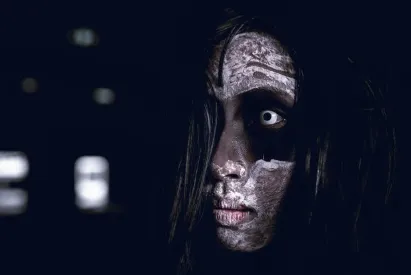
‘A Quiet Place’: How Silence Brought Depth to the Horror Genre
SMM ALIPAYUS Jan 2, 2025 News
Imagine living in a world where even the faintest sound could mean death. A Quiet Place doesn’t just ask you to imagine it—it drops you right into it. From the very first scene, this film pulls you into its terrifyingly silent world, where every creak of a floorboard and rustle of leaves can be a death sentence. But what truly sets this movie apart from typical horror flicks is its ability to combine heart-pounding tension with an emotional story about family, survival, and sacrifice. Let’s explore how A Quiet Place has redefined the horror genre, making it a modern classic.
The Concept: Silence as a Storytelling Tool
The genius of A Quiet Place lies in its central premise: silence is survival. Set in a post-apocalyptic world overrun by blind monsters with hypersensitive hearing, the film forces both its characters and audience into a heightened state of awareness. Every tiny sound becomes a potential threat, creating an atmosphere of constant tension. Additionally, learn more at https://sajfm.com/.
https://sajfm.com/Instead of relying on traditional jump scares or gore, the movie masterfully uses silence to keep viewers on edge. The absence of sound is more chilling than the loudest scream, proving that horror doesn’t need to shout to be terrifying.
Innovative Sound Design
Sound design plays a huge role in the success of A Quiet Place. The film’s audio team crafted a soundscape that feels both immersive and unnerving. Moments of silence are interspersed with carefully chosen sounds, like a character’s breathing, the crackle of leaves, or the ominous echo of a distant noise.
The contrast between silence and sound is what makes this movie so unique. When a sudden noise does break the quiet, it feels like an explosion of terror. This strategic use of sound pulls the audience into the characters’ experiences, making them feel the danger with every audible moment.
Exploring Family Dynamics in a Post-Apocalyptic World
At its core, A Quiet Place isn’t just a horror film—it’s a family story. The Abbott family’s fight for survival is deeply emotional, highlighting themes of love, sacrifice, and resilience. John Krasinski and Emily Blunt deliver stellar performances as parents trying to protect their children while coping with their fears and grief.
The family’s interactions are what give the movie its heart. From teaching their children sign language to ensuring they have moments of joy despite the bleak circumstances, the Abbots show that even in the darkest times, love and hope can prevail. This emotional depth sets the film apart from typical horror stories.
Redefining the Horror Genre
A Quiet Place breaks the mold of traditional horror films in several ways. Instead of relying on gore or cheap scares, it focuses on building suspense and tension. The film challenges the idea that horror has to be loud to be effective, proving that subtlety can be just as frightening.
Critics and audiences alike praised the movie for its fresh take on the genre. It wasn’t just scary—it was smart, emotional, and deeply engaging. This success opened the door for other thoughtful horror films, like Hereditary and The Babadook, that prioritize storytelling and character development over shock value.
John Krasinski’s Vision
John Krasinski, who directed and starred in the film, brought a unique vision to A Quiet Place. Known primarily for his comedic role in The Office, Krasinski surprised audiences with his ability to create a gripping and emotional horror story.
Krasinski’s direction balances intense suspense with heartfelt moments, creating a film that feels both terrifying and deeply human. His personal experiences as a father influenced the story, adding authenticity to the family’s struggles and sacrifices.
The Sequel and Expanding the Universe
The success of A Quiet Place naturally led to a sequel, A Quiet Place Part II. The follow-up expanded the story while maintaining the original film’s tension and emotional depth. It introduced new characters and explored the world beyond the Abbott family, showing how others survive in this sound-sensitive apocalypse.
The sequel kept the same innovative approach to sound design and storytelling, proving that the first film’s success was no fluke. With plans for spin-offs and potential prequels, the A Quiet Place universe continues to grow, offering more opportunities to explore its unique world.
Impact on Modern Horror Cinema
A Quiet Place has left a lasting mark on the horror genre. It showed filmmakers that horror doesn’t need excessive blood and gore to be effective. Instead, it can be thoughtful, emotional, and deeply impactful.
The film inspired a wave of horror movies that prioritize atmosphere, character development, and innovative storytelling. It also raised audience expectations, proving that horror can be more than just mindless scares—it can be an art form.
Conclusion
A Quiet Place isn’t just a movie; it’s an experience. By turning silence into a weapon and focusing on the emotional struggles of a family, it redefined what horror can achieve. The film’s innovative sound design, gripping story, and heartfelt performances created a masterpiece that resonates with audiences long after the credits roll. Whether you’re a horror fan or not, A Quiet Place is a film that deserves to be watched—and listened to—closely.


